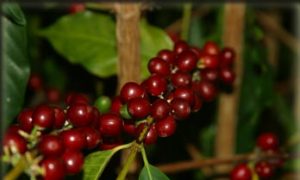
Learn all about Coffee Harvest Season in Kona Hawaii
After the Coffee Cherries are Hand Picked

Kona Coffee’s unique flavor profile has become a sensation among coffee aficionados worldwide. Originating from the volcanic slopes of Hawaii’s Big Island, Kona beans are renowned for their rich, smooth taste with hints of nutty sweetness and a vibrant acidity. This distinctive flavor has not only captivated coffee lovers but has also found its way into the preferences of online casino players. In the realm of online casinos, where excitement and entertainment thrive, Kona Coffee’s allure extends beyond the morning cup. It’s become a symbol of indulgence and sophistication, much like the premium experience sought after by players spinning the reels of online slots at https://gypsophilia.org/fantastic-four/ or enjoying a hand of virtual poker. Just as Kona Coffee is cherished for its exceptional quality, online casino enthusiasts appreciate the thrill of premium gaming experiences. The parallels between the world of Kona Coffee and online casinos are striking. Both offer a taste of luxury and a chance to savor moments of pleasure and excitement. Just as Kona Coffee is meticulously cultivated to ensure the highest quality, online casinos strive to provide players with top-tier gaming experiences, from cutting-edge graphics to immersive gameplay.
Coffee harvest season runs from August to December. The coffee beans are hand picked. The cherries, or the fruit of the coffee tree containing coffee beans, are then run through a machine called a pulper which removes the red, fleshy berry, extracting the bean from the pulp. Rollers in the pulpers get the coffee beans ready for drying by removing the mucilage and removing it from the cherry. When the beans are extracted, they are rinsed in clean, fresh water.
Time in the Fermentation Tanks
When the beans are extracted, they are taken to the fermentation tanks. Many experienced coffee drinkers believe this process during coffee harvest season, known as wet-method, is the reason for the clear, bright flavor of Kona Coffee.
This process can take place anywhere, but on the mountainside slopes of Kona’s coffee farms, elevation plays an important role. The beans ferment for about 12 hours at lower elevations and up to 24 at higher elevations. If the cherries are left to ferment on their own, it will bring out strong unpleasant flavors and can contaminate an entire batch.
Drying in the Hawaiian Sun
Once fermented, the beans are rinsed again and put out to dry on a flat surface under the tropical sun and Kona breeze. These surfaces are called hoshidanas. Some hoshidanas feature rolling roofs that allow the beans to be exposed to the sun and covered when the afternoon rains roll in. The beans are raked on the hoshidanas during coffee harvest season to dry out evenly. This process could take one to two weeks.
Milling
When the beans are dried, they are covered by a thin, stiff covering with the thickness of paper. Appropriately, this is called parchment. The beans undergo a milling process to remove the parchment and a polishing.
Sorting and Classification
The State of Hawaii Department of Agriculture sets standards as to grades of coffee beans. The beans are sorted according to these guidelines once the beans have been dried, milled and polished. It’s one of the final steps in coffee harvest season. These guidelines sort beans by size and shape. A vibrating table uses gravity to separate the beans by density and to eliminate defective beans.
